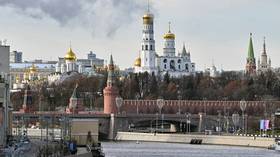Dinosaur bonanza for Russia’s Far East
The soil of Russian far-eastern Amur region, rich in precious metals, has yielded up treasure of another kind. Dinosaur bones found here have attracted paleontologists eager make advances in their branch of science.
Yury Bolotsky is a man obsessed with the past – a bygone age when dinosaurs ruled this part of Russia.He may have been born in modern times in the west of the country, but it is the untapped Jurassic history of Russia’s far eastern Amur region to which he has devoted his adult life.“This site has been known about since about 1948,” he told RT. “An unbelievable number of bones are buried here and I think we will be digging for at least another two years. They are literally everywhere here.” “The Amur Region is lucky,” Bolotsky added. “Only here can a site boast of having produced a complete dinosaur skeleton.” A discovery, made over a decade ago by Bolotsky’s team, has led to the formal recognition of a new breed of dinosaur – Olorotitan, translated as “giant swan”. A 12-metre-long herbivore was found almost exclusively in the Amur region and it was Yury’s son, Ivan, who fist spotted the fragment of tail bone sticking out of the earth. Three years of careful excavation later, father and son made paleontology history. Ivan, who has since followed in his father’s footsteps, said that excavations require patience and skill in equal measure. “When we discover the bone we begin to remove the ground around it using a knife, your hand and a shovel – very careful, very slow because there can still be more bones in the ground around it,” he explained, while demonstrating his techniques for RT’s cameras. Yury and his team have been excavating the same site in Amur region for the past three years. There, they have found well over a 1,000 dinosaur bones, which are approximately 65 million years old. The scientists believe that the bones of hundreds of more dinosaurs are yet to be found within their small plot alone.The team say they may have also found fragments of another giant duck-billed plant-eater, unique to the region. The dinosaur was named in its honour – the Amurosaurus. Each new discovery must be carefully catalogued and this mission is carried out by the local Paleontological Museum, which carefully collects and displays Bolotsky’s discoveries. According to the museum’s director, Olga Sashnina, contrary to what we know today, just a century ago foreign paleontologists did not believe that Russian soil held even a trace of dinosaur remains. She said that American paleontologist Charles Marsh, who visited Moscow in 1887, declared that there were no dinosaurs in Russia – and everyone believed him.Luckily, Yury Bolotsky comes from a long line of scientists who chose to follow their own instincts and secured Amur’s place in the history books as one of the world’s foremost sites for paleontology. It was their determination, and no small amount of digging, that unearthed a dinosaur bonanza.













